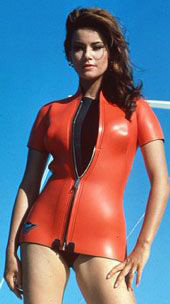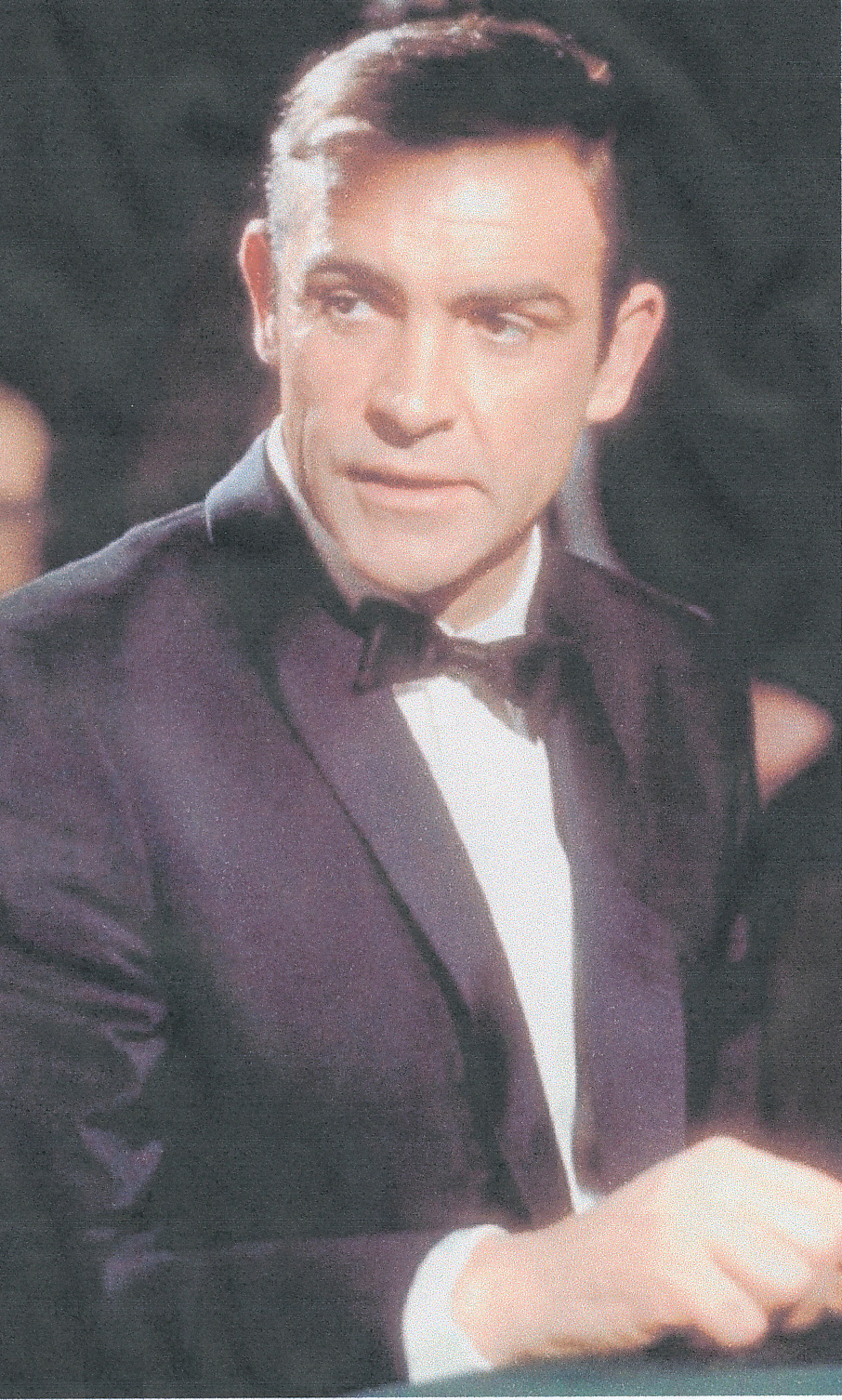By Jonathan Brett Young
(This article was first published in NOCN 85, 1 June 2011.)
In the 1965 James Bond film Thunderball, the villain, Emilio Largo, played by the striking Adolfo Celi, with his snow white hair and black eye-patch, is attempting his getaway in the hydrofoil Disco Volante when a British frigate appears from over the horizon and, with some accurate shooting disables the vessel causing it to hit rocks at high speed. But not before 007 and the beautiful Domino (Claudine Auger — a previous Miss France), escape by jumping off into the water to be hoisted up by a passing US Navy plane.
When the model of the Disco Volante was dynamited in this scene the explosion was so great that windows were broken in Bay St in Nassau some miles away.
But how did HMS Rothesay, a Royal Navy Type 12 frigate on the West Indies Station, come to have a bit part in the fourth James Bond film?
“I can get you into movies”
It all started some weeks previously when one of the officers was talking to a girl in a bar in Nassau (as they do). She was a nurse and was on the film set of the latest 007 adventure which was being shot nearby. Would he like to visit the set? Would he! He did, and found himself talking to the legendary producers Albert “Cubby” Broccoli and Harry Saltzman, who immediately said “Let’s write this ship into the chase at the end”. Permission was given by the Admiralty (provided costs were met), which leaves one wondering what the going daily rate to hire a British frigate was in 1964.
Reality meets fantasy
And that is why I, as Gunnery Officer, found myself on the GDP with a rather nervous Captain (he had just assumed command), and the Director, Terence Young. The Captain was conning the ship, which was doing 30 knots and weaving in between static camera barges and accompanied by a fleet of fast motor boats all firing machine guns and chasing the villain. And all this within three miles of land. Every now and then Terence Young would shout at me “Fire the guns NOW!”, and I would order over the Armament Broadcast: “Four Fives – Engage”.
It was at this point that reality and fantasy met head on. There was no way we could actually fire the shell: we could only fire the cartridge with the cordite propellant. There was therefore no gun recoil, necessary to eject the empty casing; and no air blast to send residue out of the barrel. These things had to be done by hand by the turret crew. There was however a very satisfying flash and clouds of yellow smoke including lots of unburnt cordite which covered the deck. As a spectacle it was all the Director could have asked for.
As in any film the Director required several takes, but after about an hour we had completed our filming and returned to Nassau where we were berthed amongst the cruise ships.
What the Admiralty made of the differing number of cartridges and shell used on our annual returns is not known. Normally they should correspond exactly.
Sunday lunch
On the Sunday the wardroom entertained some of the cast to lunch. It was very informal, and in chatting to Sean Connery I learned that he had served in the Royal Navy as a gunnery rating. He said he would like to meet my sailors.
Sundays in harbour are a time of relaxation, and when I went down to check the gunnery messdeck it was a shambles. Kit lay everywhere; there were half-naked sailors in all states of undress lying around, all waiting to go ashore in the evening to sample the delights of this Caribbean island.
“Get this tip sorted out”
Leading Seaman Reid was the Leading Hand in charge of the Mess, an amiable 6 ft 3 Irishman. (He was often an Able Seaman; he was regularly disrated for misdemeanours. )
I said to the sailors: “Sean Connery wants to meet you guys — get this tip sorted out. You’ve got five minutes.” I gave them ten, then said to Sean “Let’s go and meet the gunnery division.” As we were leaving the wardroom, Claudine Auger said “Ooh! May I come too?”
I have said it was an informal gathering; 007 was in shorts and a shirt. However Miss France 1964 was wearing what can only be described as a very short towelling beach gown with not a lot on underneath as far as I could see.
As I descended the ladder to the messdeck I was reminded of those old photos of messdecks in WW I battle-cruisers, where the sailors are all seated in rows at the mess tables, all neatly dressed and immaculate in appearance.
Sean Connery followed me down the ladder then Miss Auger started down. Thirty pairs of eyes locked onto those shapely legs like our gunnery radar locking onto an approaching aircraft. There was an audible sigh round the messdeck.When we were all down there was dead silence. This was broken by Leading Seaman Reid saying “Would youse like a cup of tea?” After that there was lots of excited chatter and photos taken.
Lipstick
The lipstick-stained cup that Miss Auger used was secured to the bulkhead afterwards as a trophy. (Sailors love trophies. Almost anything will do if it has history.)
Thunderball was released in December 1965, and for a period was the top-grossing film of all time. In terms of ‘posteriors-on-seats’ it still beats many blockbusters of more recent years.
When Rothesay returned to the UK, United Artists paid for a busload of the ship’s company, with wives and girlfriends to go up to Pinewood Studios. They watched some of the interior shots being filmed, and were entertained to lunch.
Maybe I am biased, but I still think that Sir Sean Connery — as he is now — was the best Bond of them all. He is an award-winning actor, has set up a charity to help people in Scotland, and has never forgotten his roots — even all the way back to the gunnery messdeck.
The photographs of Sean Connery and Claudine Auger are original publicity stills for the film Thunderball, produced by United Artists.


